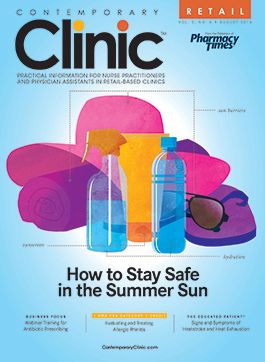Retail Health Market to Reach $4 Billion in Revenue
The convenient, cost-effective care provided by a growing number of retail clinics is churning out remarkable revenue for the retail health industry.
The convenient, cost-effective care provided by a growing number of retail clinics is churning out remarkable revenue for the retail health industry.
First, a November 2015 report from Accenture forecasted that the retail clinic footprint will expand to 2800 clinics by 2017, a remarkable increase from about 2150 clinics in 2015. Now, an analysis from Frost & Sullivan projects that this growth will translate to $4 billion in revenue for the global retail health market in 2022, significantly up from the $1.35 billion in revenue that the market earned in 2015.
Clearly, the retail health industry is not only here to stay, but also gaining popularity among consumers seeking fast, affordable health care. As the authors of Frost & Sullivan’s “Future of Retail Healthcare Delivery” report explained it, “The convenience and cost advantages for patients, along with lucrative opportunities to capture new revenue streams for care providers, ensure the rapid uptake of the retail care model.”
Another factor paving the way for the future growth of retail clinics is the current shortage of primary care physicians, which, according to Frost & Sullivan’s report, is resulting in longer wait times. As a “cure for the common wait” on the retail clinic front, MinuteClinic recently launched a new digital tool that allows patients to view estimated wait times at most MinuteClinic locations and hold a place in line through their mobile device. Currently, the tool is only available to patients visiting MinuteClinic locations inside CVS pharmacy stores and Longs Drugs in Hawaii, but it’s set to be expanded to Target-based clinics later this year.
Let’s remember to mention the expanding scope of health care services offered at retail clinics, such as treatment and referrals for the acute and chronic skin conditions that are detailed in this Dermatology theme issue of Contemporary Clinic. We’re confident that the key clinical information presented in the articles “Assessment and Treatment of Acne in the Retail Clinic Setting,” “Summer Bites, Stings, Hives, and Rashes: Counseling Points for Retail Clinicians,” and “Best Strategies for Blisters and Sores” will allow our readers to help their patients look and feel their best for the upcoming school year.
Thank you for reading!
Mike Hennessy, Sr
Chairman and CEO

Knock Out Aches and Pains From Cold
October 30th 2019The symptoms associated with colds, most commonly congestion, coughing, sneezing, and sore throats, are the body's response when a virus exerts its effects on the immune system. Cold symptoms peak at about 1 to 2 days and last 7 to 10 days but can last up to 3 weeks.
COPD: Should a Clinician Treat or Refer?
October 27th 2019The Global Initiative for Chronic Obstructive Lung Disease (GOLD) defines the condition as follows: “COPD is a common, preventable, and treatable disease that is characterized by persistent respiratory symptoms and airflow limitation that is due to airway and/or alveolar abnormalities usually caused by significant exposure to noxious particles or gases.â€
Diabetic Ketoacidosis Is Preventable With Proper Treatment
October 24th 2019Cancer, diabetes, and heart disease account for a large portion of the $3.3 trillion annual US health care expenditures. In fact, 90% of these expenditures are due to chronic conditions. About 23 million people in the United States have diabetes, 7 million have undiagnosed diabetes, and 83 million have prediabetes.
What Are the Latest Influenza Vaccine Recommendations?
October 21st 2019Clinicians should recommend routine yearly influenza vaccinations for everyone 6 months or older who has no contraindications for the 2019-2020 influenza season starting at the end of October, according to the Advisory Committee on Immunization Practices.
What Is the Best Way to Treat Pharyngitis?
October 18th 2019There are many different causes of throat discomfort, but patients commonly associate a sore throat with an infection and may think that they need antibiotics. This unfortunately leads to unnecessary antibiotic prescribing when clinicians do not apply evidence-based practice.
